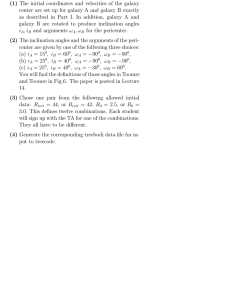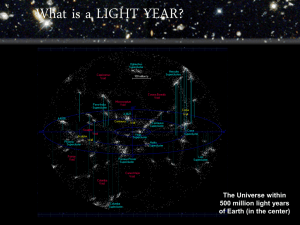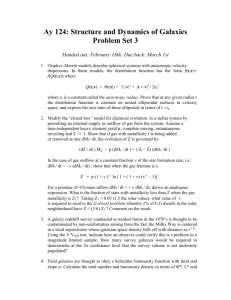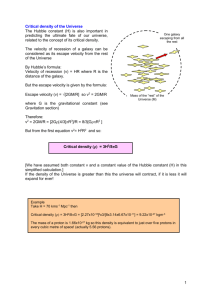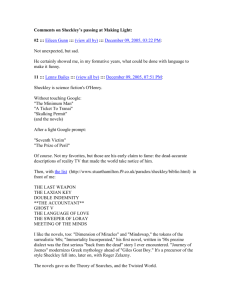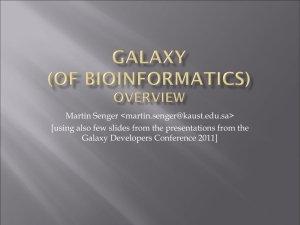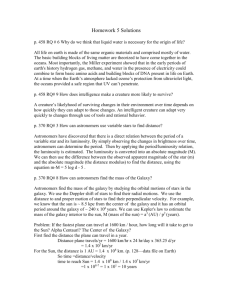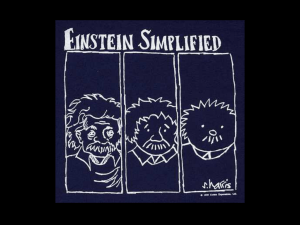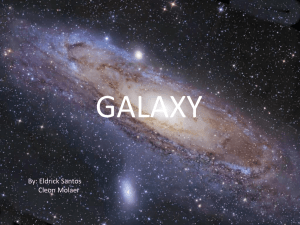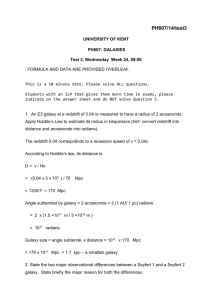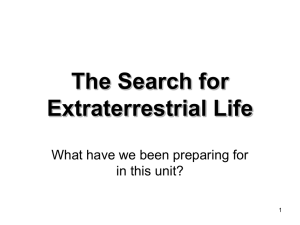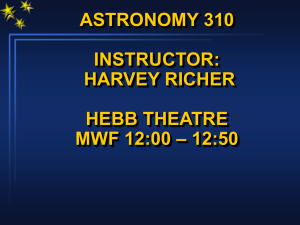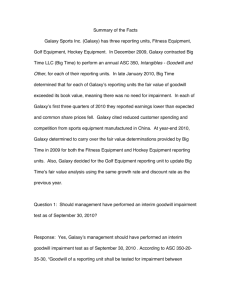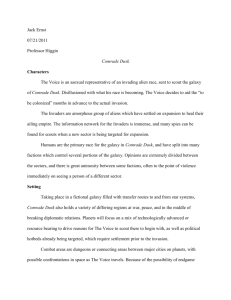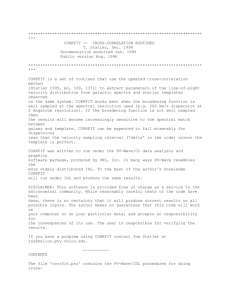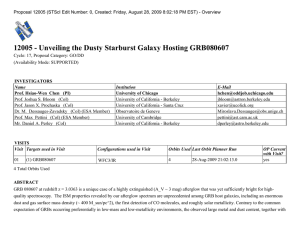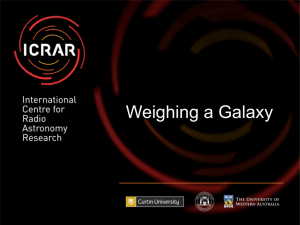Nuclear Physics
advertisement
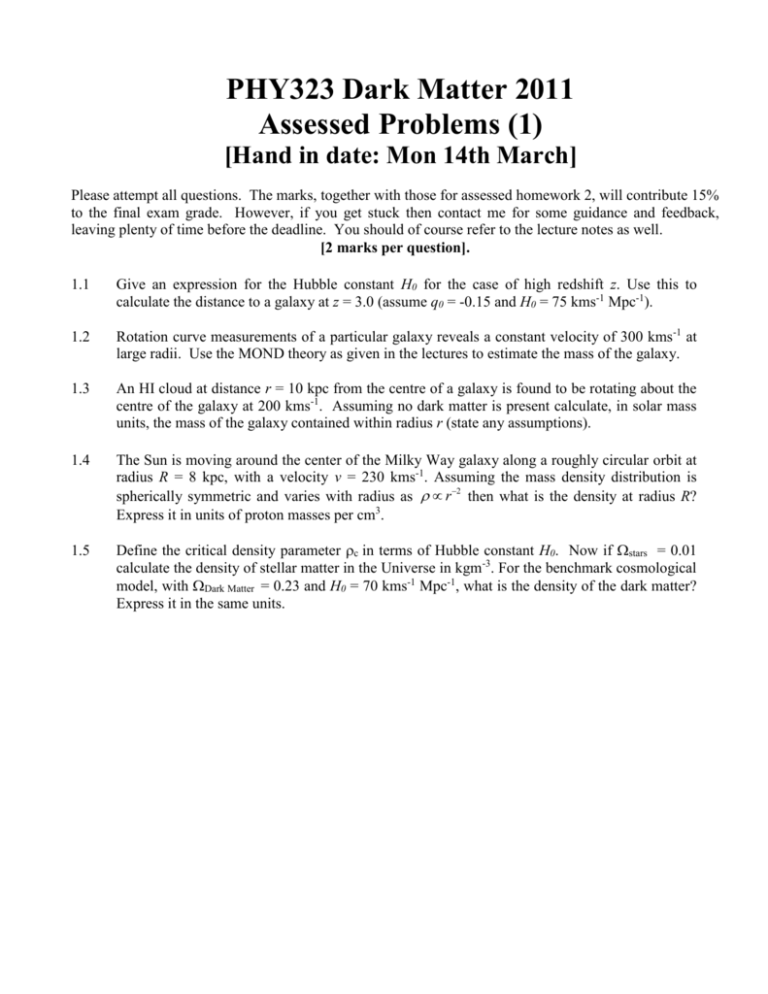
PHY323 Dark Matter 2011 Assessed Problems (1) [Hand in date: Mon 14th March] Please attempt all questions. The marks, together with those for assessed homework 2, will contribute 15% to the final exam grade. However, if you get stuck then contact me for some guidance and feedback, leaving plenty of time before the deadline. You should of course refer to the lecture notes as well. [2 marks per question]. 1.1 Give an expression for the Hubble constant H0 for the case of high redshift z. Use this to calculate the distance to a galaxy at z = 3.0 (assume q0 = -0.15 and H0 = 75 kms-1 Mpc-1). 1.2 Rotation curve measurements of a particular galaxy reveals a constant velocity of 300 kms-1 at large radii. Use the MOND theory as given in the lectures to estimate the mass of the galaxy. 1.3 An HI cloud at distance r = 10 kpc from the centre of a galaxy is found to be rotating about the centre of the galaxy at 200 kms-1. Assuming no dark matter is present calculate, in solar mass units, the mass of the galaxy contained within radius r (state any assumptions). 1.4 The Sun is moving around the center of the Milky Way galaxy along a roughly circular orbit at radius R = 8 kpc, with a velocity v = 230 kms-1. Assuming the mass density distribution is spherically symmetric and varies with radius as r 2 then what is the density at radius R? Express it in units of proton masses per cm3. 1.5 Define the critical density parameter c in terms of Hubble constant H0. Now if stars = 0.01 calculate the density of stellar matter in the Universe in kgm-3. For the benchmark cosmological model, with Dark Matter = 0.23 and H0 = 70 kms-1 Mpc-1, what is the density of the dark matter? Express it in the same units.



